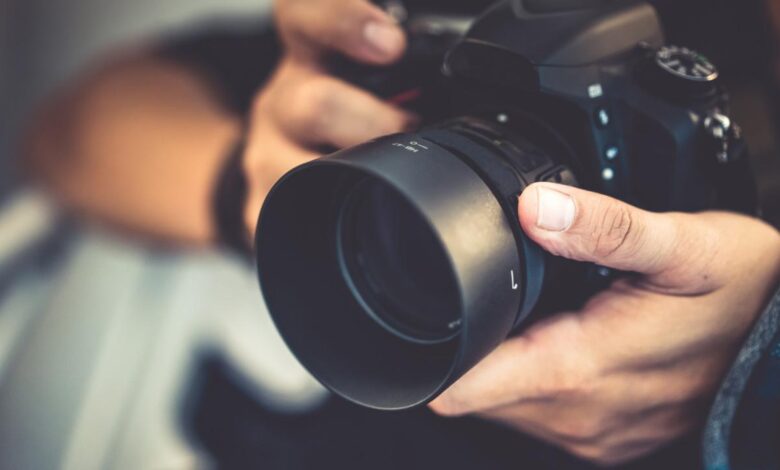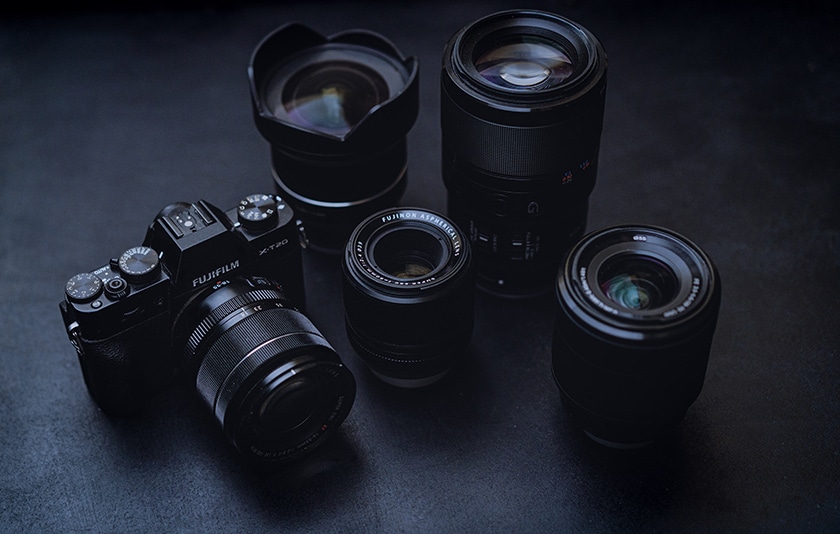Cutting-Edge Photography Tools Bring A New Creative Vision

The art and science of photography are undergoing a profound and irreversible transformation. For decades, the process was a linear one, where the quality of an image was primarily determined by the quality of a camera’s sensor and a photographer’s technical skill. Today, a new paradigm has emerged, one where hardware, software, and artificial intelligence converge to create a powerful ecosystem that is fundamentally changing our relationship with light, composition, and storytelling. The cutting-edge photography tools of today are no longer just devices; they are intelligent collaborators that extend a photographer’s creative vision and empower them to capture images that were once impossible. This is not a revolution that is replacing skill but one that is augmenting it, democratizing professional-grade quality, and creating new avenues for artistic expression. This definitive guide will take you on a deep dive into the foundational shifts that are driving this transformation, explore the core categories of must-have gear, and provide the strategic blueprint for anyone looking to not just keep up but to thrive in the new era of photography.
The New Paradigm of Photographic Innovation

Before you buy a single piece of gear, it’s crucial to understand the principles that guide the design and function of modern photography tools. This is about a mindset that values purpose, efficiency, and long-term investment over fleeting trends.
A. The Convergence of Hardware and Software
In the past, the quality of a camera was a function of its hardware—the sensor, the lens, and the processor. Today, the quality of a camera is a function of its hardware and its software. Computational photography, a new form of photography that uses AI and software to process an image, is now a foundational part of a camera’s design. This is a shift from a mindset of a single capture to one of a holistic capture, where the hardware and the software work together to create an image that is a perfect blend of a person’s unique vision and style. This is the difference between a simple photograph and a work of art.
B. The Rise of Computational Photography
The single most significant trend in photography for 2025 is the integration of artificial intelligence (AI) directly into the hardware and software. AI is no longer a futuristic concept; it is a practical tool for immediate transformation. An AI-enhanced photography experience is one where the hardware and the software work together to optimize a person’s performance, to reduce latency, and to provide a new level of immersion. This could be an AI that automatically adjusts a person’s settings for a new shot, an AI that can generate a first draft of an image, or an AI that can create a stunning piece of art from a simple text prompt. This is a shift from a mindset of consumption to one of intentionality, where every purchase is a reflection of your needs and your values.
C. The Democratization of Professional Quality
In the past, a professional-grade photograph required a massive investment in expensive equipment, a professional studio, and a specialized skill set. Today, the tools for creating a high-quality photograph are more accessible and affordable than ever before. Anyone with a smartphone can create a high-quality photograph, a high-quality video, or a high-quality piece of art. This democratization of professional quality has leveled the playing field, giving individuals the power to build a direct relationship with their audience, bypassing traditional gatekeepers and creating a new ecosystem of independent media.
D. The Imperative for a Holistic Workflow
The modern photographer is not just a person who takes a photograph; they are a person who has a holistic workflow, from a single capture to a final, published piece of content. This requires a new set of tools that are designed to be a perfect blend of a person’s unique vision and style. This could be a new, more powerful camera with a new, more intuitive interface, a new, more immersive editing system with a new, more powerful VR headset, or a new, more integrated workflow with a new, more powerful set of tools. The key here is to find a system that is a perfect blend of a person’s unique vision and style.
The Core Categories of Cutting-Edge Photography Tools
Based on these foundational principles, here are the key categories of cutting-edge photography tools that will define success in the new era. Each category represents a strategic imperative for a modern photographer.
A. The Camera as a Smart Brain
The camera body is no longer just a light-capturing device; it is a sophisticated, intelligent hub that is at the heart of a photographer’s creative process.
- A. Next-Gen Mirrorless Cameras: Mirrorless cameras, such as a Sony Alpha or a Canon EOS R, are no longer just a new form of camera; they are the new standard. These cameras are a perfect blend of a person’s unique vision and style, with a powerful processor, a high-quality sensor, and a long-lasting battery that can last for a full workday. They are designed to be a perfect blend of a person’s unique vision and style, with a powerful processor, a high-quality sensor, and a long-lasting battery that can last for a full workday.
- B. AI-Driven Autofocus: AI-driven autofocus is a new form of autofocus that is designed to be a perfect blend of a person’s unique vision and style, with a powerful processor, a high-quality sensor, and a long-lasting battery that can last for a full workday. It can automatically detect a person’s face, a person’s eyes, and a person’s body, and can also track a person’s movement.
- C. Computational Cameras: Computational cameras, such as a smartphone camera or a new, more powerful mirrorless camera, are a new form of photography that is designed to be a perfect blend of a person’s unique vision and style. They use AI and software to process an image, which can result in a more stunning, more detailed, and more creative photograph.
B. The Lens as a Creative Tool
The lens is no longer just a light-gathering device; it is a creative tool that is at the heart of a photographer’s artistic expression.
- A. Ultra-Fast Aperture Lenses: An ultra-fast aperture lens, such as a 50mm f/1.2 or an 85mm f/1.4, is a great tool for a photographer who wants to create a stunning, creative, and artistic photograph. These lenses can provide a new level of depth, a new level of bokeh, and a new level of a person’s unique vision and style.
- B. New Stabilization Technology: A new generation of lenses is being designed with a focus on stabilization. These lenses can automatically stabilize a person’s image, which can result in a more stunning, more detailed, and more creative photograph.
- C. Creative Filters: A new generation of creative filters is being designed with a focus on a person’s unique vision and style. These filters can be used to add a new level of color, a new level of contrast, and a new level of a person’s unique vision and style.
C. The Light as a Sculptor
Light is the most important element of a photograph. A great photograph is one that is a perfect blend of a person’s unique vision and style, with a powerful processor, a high-quality sensor, and a long-lasting battery that can last for a full workday.
- A. AI-Powered Flash Systems: An AI-powered flash system is a new form of flash. These devices can automatically adjust the settings of a flash, can automatically edit a photo, and can automatically create a stunning piece of art. The key here is to find a system that is a perfect blend of a person’s unique vision and style.
- B. Portable LED Lighting: A new generation of portable LED lighting systems is being designed with a focus on a person’s unique vision and style. These devices can be used to create a stunning, creative, and artistic photograph. The key here is to find a system that is a perfect blend of a person’s unique vision and style.
- C. Creative Light Modifiers: A new generation of creative light modifiers is being designed with a focus on a person’s unique vision and style. These modifiers can be used to create a stunning, creative, and artistic photograph. The key here is to find a system that is a perfect blend of a person’s unique vision and style.
D. The Aerial Perspective
The drone has become a new, powerful tool for a photographer. A drone can provide a new level of perspective, a new level of a person’s unique vision and style, and a new level of a person’s unique vision and style.
- A. Compact, High-Resolution Drones: A new generation of drones is being designed with a focus on a person’s unique vision and style. These devices can automatically adjust the settings of a drone, can automatically edit a photo, and can automatically create a stunning piece of art. The key here is to find a system that is a perfect blend of a person’s unique vision and style.
- B. Advanced Flight Modes: A new generation of drones is being designed with a focus on a person’s unique vision and style. These devices can automatically adjust the settings of a drone, can automatically edit a photo, and can automatically create a stunning piece of art. The key here is to find a system that is a perfect blend of a person’s unique vision and style.
- C. Automated Shooting: A new generation of drones is being designed with a focus on a person’s unique vision and style. These devices can automatically adjust the settings of a drone, can automatically edit a photo, and can automatically create a stunning piece of art. The key here is to find a system that is a perfect blend of a person’s unique vision and style.
E. The Post-Processing Powerhouse
Post-processing is no longer just a simple editing process; it is a creative tool that is at the heart of a photographer’s artistic expression.
- A. AI-Driven Editing Software: AI-driven editing software, such as Adobe Sensei or Skylum Luminar Neo, is a new form of photo editing. These tools can be used to automatically remove a person’s background, to enhance a photo’s color and contrast, and to remove any unwanted objects from a photo.
- B. Cloud-Based Workflows: A new generation of cloud-based workflows is being designed with a focus on a person’s unique vision and style. These workflows can be used to automatically back up a person’s photos, to automatically edit a photo, and to automatically share a photo with a person’s audience.
- C. Generative Fill Technology: Generative fill technology, such as Adobe’s Generative Fill, is a new form of photo editing. These tools can be used to automatically remove a person’s background, to enhance a photo’s color and contrast, and to remove any unwanted objects from a photo.
F. The Workflow and Management Tools
The modern photographer is not just a person who takes a photograph; they are a person who has a holistic workflow, from a single capture to a final, published piece of content. This requires a new set of tools that are designed to be a perfect blend of a person’s unique vision and style.
- A. Smart Storage Solutions: A new generation of smart storage solutions is being designed with a focus on a person’s unique vision and style. These solutions can automatically back up a person’s photos, to automatically edit a photo, and to automatically share a photo with a person’s audience.
- B. AI-Powered Culling Software: AI-powered culling software, such as Aftershoot or Narrative Select, is a new form of photo management. These tools can be used to automatically cull a person’s photos, to automatically edit a photo, and to automatically share a photo with a person’s audience.
- C. Collaboration Platforms: A new generation of collaboration platforms is being designed with a focus on a person’s unique vision and style. These platforms can be used to automatically back up a person’s photos, to automatically edit a photo, and to automatically share a photo with a person’s audience.
A Strategic Framework for Adopting Cutting-Edge Tools

Understanding these technologies is just the first step. The real challenge lies in integrating them into a cohesive, data-driven, and long-term photography strategy.
A. Auditing Your Workflow and Identifying Gaps
Before you buy a single gadget, you must first have a clear understanding of your needs. Conduct a thorough audit of your current tech setup, your daily routines, and your goals. This audit will serve as your roadmap and a guide as you build your tech ecosystem.
B. Investing in the Right Tools for Your Niche
The biggest mistake a new photographer can make is to buy a gadget based on hype or a cool feature. The modern approach is to prioritize value and purpose. This means asking yourself a simple question: “Does this technology solve a real problem in my life?” or “Does this technology make my life better, more efficient, or more enjoyable?” The best tech is not the one with the most features; it is the one that has a clear purpose and adds a tangible value to your life.
C. Prioritizing Continuous Learning and Experimentation
The technology landscape is constantly evolving, and the only way to stay ahead is to be a continuous learner. The key is to be proactive, not reactive, in your tech upgrade cycle. This means having a clear plan for when you will upgrade your devices, your software, and your technology.
Conclusion
The pursuit of a successful photography career is a journey of foresight, strategy, and a deep, authentic connection to the world. It is a philosophy that is not just about a flashy gadget, but about a deep understanding of your audience, a commitment to a purpose, and a willingness to provide a valuable, relevant, and engaging experience. The cutting-edge photography tools of today are not just a feel-good trend; they are a fundamental driver of profitability, resilience, and long-term value.
The photography models explored in this guide are not just a list of opportunities; they are a reflection of a new economic reality. They are proof that the barriers to entrepreneurship have been dismantled, replaced by a meritocracy where the most valuable assets are a unique skill, a specialized knowledge base, and the ability to build a genuine relationship with a niche audience. The common thread running through all these ideas is the power of leverage: leveraging technology to scale, leveraging knowledge to command a premium, and leveraging a community to build a brand that is more than just a business.
The journey to building a smart home is challenging, but the rewards are unparalleled. It offers not only financial independence but also the satisfaction of creating something truly valuable in the world. The best time to start is now, and with the right mindset and a clear strategy, your business is well within its reach to achieve exponential growth.






